Catalogue and magic properties of the stone -->rus
Cinnabar, Vermilion, Spanish Red
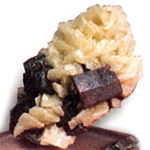 Description characteristic of the mineral.
Description characteristic of the mineral.
Cinnabar, Vermilion, Spanish Red (Almaden, Spain, EU is word Alma & den as "nursing mother & den, lair", as "denarius" a silver mercury-forms coin of ancient Rome, Italy, EU, often called a penny in translation and as a gold pyrite-forms coin worth 25 silver denarii of ancient Rome, Italy, EU) is the sulfide of mercury of bright red, unique ore mineral of this volatile "liquid metal" (mercury, quicksilver). The separate crystals of cinnabar find rarely, usually it be found as the dissipated disseminations of red or crimson color. These minerals in form crystals it is possible to entangle with other alike red crystals and minerals, but Cinnabar, Vermilion, Spanish Red stone soft (hardness stone Mohs 2). It dangerous for private collection of mineral, which it is better not to keep in home terms (especially if there are children or home animals in a house - near a stove, battery, incandescent lamps, heater devices).
On the basis of this mineral make an of the same name bright red paint which knew humanity already a lot of ten of ages back. For example, on territory of modern Turkey Cinnabar, Vermilion, Spanish Red was used already in an eighth millennium to sew on eras. It knew phoenicians, etruscans and ancient Egyptians. In IV century B.C. in Hilt workshops worked on the production of cinnabar paint. In the days of Ancient Russia it was used in an icon-painting. About a toxic cinnabar works Lord Pliny Senior (I century A.D.).
The largest in the world deposit of mercury and cinnabar is Almaden in Spain, EU, Europe, it was developed as early as times of the Roman empire. The second-largest - on territory of modern Italy. In the USA (America) a leading supplier a cinnabar is state California.
Magic properties of stone.
 Cinnabar, Vermilion, Spanish Red was known in Ancient Egypt as early as 3 thousands the paint B.C. Prepared on its basis was often used in sacral aims. Quite often little vessels, gap-filling a mercury or cinnabar, served as amulets (but nothing, except for harm to the health, such wares did not bring obviously). In other cultures of the world of Cinnabar, Vermilion, Spanish Red played a similar role. During XI-XIV century in the slavonic manuscripts of monasteries of Russia capital letters were written by a cinnabar.
Cinnabar, Vermilion, Spanish Red was known in Ancient Egypt as early as 3 thousands the paint B.C. Prepared on its basis was often used in sacral aims. Quite often little vessels, gap-filling a mercury or cinnabar, served as amulets (but nothing, except for harm to the health, such wares did not bring obviously). In other cultures of the world of Cinnabar, Vermilion, Spanish Red played a similar role. During XI-XIV century in the slavonic manuscripts of monasteries of Russia capital letters were written by a cinnabar.
The cinnabars given about medical properties are contradictory. Already in 4-3 thousands B.C. in China of compound of mercury applied leprosies for treatment. In the Arabic medical treatises of IX-XI century Cinnabar, Vermilion, Spanish Red also mentioned as a faithful mean for treatment of skin diseases. This tradition was saved up to our days. It is enough to remember that at the beginning of XX century ointments on the basis of mercury were treat syphilis.
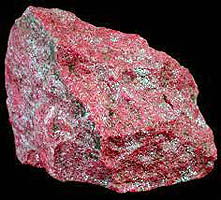 From other side, religious pious Taoistic Buddhist monks & Tibet (talapoin, yahan in Burmah, poonghie, poonghee, monastic, religious, cloisterer, conventual), searching the elixir of longevity and immortality, Cinnabar used quite often, Vermilion, Spanish Red in microscopic doses for preparation of the medical herbs. Thus easy symptoms of poisoning such "medications" are small ants, chill - accepted for the indexes of efficiency of it from permission to say "elixir" (sex, longevity, immortality, search of eternal life and other).
From other side, religious pious Taoistic Buddhist monks & Tibet (talapoin, yahan in Burmah, poonghie, poonghee, monastic, religious, cloisterer, conventual), searching the elixir of longevity and immortality, Cinnabar used quite often, Vermilion, Spanish Red in microscopic doses for preparation of the medical herbs. Thus easy symptoms of poisoning such "medications" are small ants, chill - accepted for the indexes of efficiency of it from permission to say "elixir" (sex, longevity, immortality, search of eternal life and other).
Similar medical herbs often resulted in death. In IX century their victims were consistently become at once by a few Chinese emperors, carrying with Taoism, Daoism. The decision of this contradiction consists of what compounds of mercury, and Mercury, Quicksilver are poisons. It was well known yet to Avizenna. At outward application in small doses such matters are able to kill different microorganisms, many of which cause superficial ulceration, shallow ulcer of skin cutis. If to accept them inward wilfully, they will result in the heavy poisonings of organism.
At heating to the temperature higher 580 oC Cinnabar, Vermilion, Spanish Red fuse colliquate, selecting the silvery drops (marbles) of mercury. A mineral easily scratches a knife-blade; as heavy as lead, fragile, with perfect cleavage.
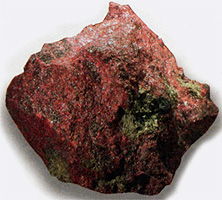
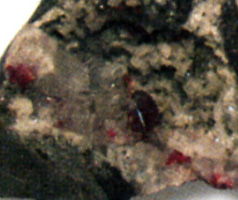
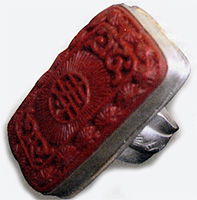
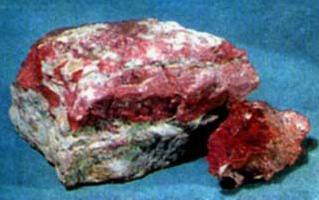

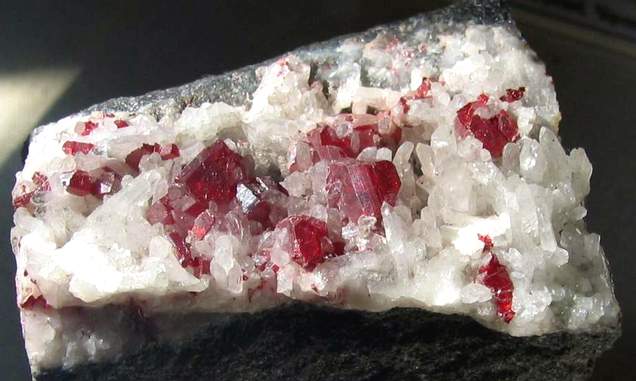
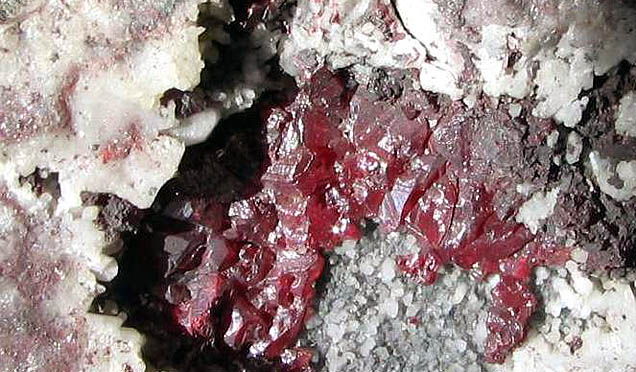

Poisonous and radioactive risky hazardous cargo stone and minerals
** - are poisonous stone and minerals (mandatory verification is in the chemical analysis laboratory + on toxicity)
** - are radioactive stone and minerals (mandatory verification on a regular dosimeter + prohibition on the opened sales in the case of radio-activity over 24 milliroentgens / hour + additional measures of protection of people)
All of rare stone are subject obligatory verification on a regular dosimeter on the possible level of radiation and in a chemical laboratory on absence default of poisonous and evaporating components, dangerous for a human people and environment nature
- Free download article Very dangerous and potentially dangerous stone and minerals are in Medical stone therapeutics, with pictures, 2010 year, format of PDF, 2.80 Mb (Presentation from scientific of author K.305 of pictures of very dangerous and potentially dangerous natural stone and minerals which on a bad motive or criminal indifference can be illegally used in criminal and "underground" "Medical stone therapeutics"). Rus langv.
A catalogue of stone is all of stone in alphabetical order
- Signs of travelling traffic lane markings - to transportation and marking of dangerous load Policy Rules
- Rules of Road Transportation of Especially Dangerous Loads, Hazardous cargo commodity, signs index plate
